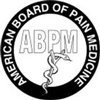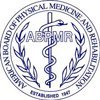Stem Cell Therapy for Hip Pain
What are common hip injuries/diseases?
Any injury or disease of the hip will adversely affect the joint’s range of motion and ability to bear weight. The most common hip injuries/diseases include
- Hip Arthritis
- Labral Tear
- Trochanteric Bursitis
- Avascular Necrosis
- Inflamed Synovium
How do stem cells help in the treatment of hip pain?
Stem Cells
Stem cells are present in all of us acting like a repair system for the body. However, with increased age sometimes the optimum amounts of stem cells are not delivered to the injured area. The goal of stem cell therapy is to amplify the natural repair system of the patient’s body.
How do you prepare for the stem cell procedure?
Preparing for the Procedure
It is important that you stop taking any non-steroidal anti-inflammatory drugs (NSAIDs) at least two weeks before your procedure.
Preparing for a stem cell procedure is relatively easy and your doctor will give you specific instructions depending on your condition.
How are stem cells derived from bone marrow used for treatment of hip pain?
Procedure Using Stem Cells Derived from Bone Marrow:
The procedure begins with your doctor extracting stem cells from your own bone marrow. Bone marrow is usually aspirated from your hip region. Your doctor will first clean and numb your hip area. A needle is then introduced into an area of your pelvic bone known as the iliac crest. Bone marrow is then aspirated using a special syringe and the sample obtained is sent to the laboratory. In the laboratory, the aspirate is spun in a machine for 10 to 15 minutes and a concentrated stem cell sample is separated.
Your doctor then cleans and numbs your affected area to be treated and then, under the guidance of special x-rays, injects the stem cells into the diseased region. The whole procedure usually takes less than one hour, and you may return home on the same day of the procedure.
What postoperative precautions must be taken?
Post-Operative Care
- You will most likely be able to return to work the next day following your procedure.
- You will need to take it easy and avoid any load bearing activities for at least two weeks following your procedure.
- You will need to refrain from taking non-steroidal, anti-inflammatory medications (NSAIDS) for a while as this can affect the healing process of your body.
What are the risks and complications of stem cell therapy?
Risks and complications
Stem cell therapy is generally considered a safe procedure with minimal complications, however, as with any medical procedure, complications can occur.
Stem cell therapy is an autologous procedure, which means that it involves using tissue taken from your own body. This significantly reduces the risk of allergic reaction and rejection of the cells by the body.












